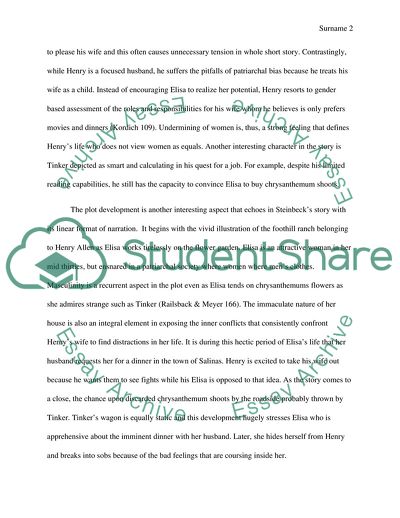Cite this document
(The Chrysanthemums by John Steinbeck Book Report/Review Example | Topics and Well Written Essays - 1250 words, n.d.)
The Chrysanthemums by John Steinbeck Book Report/Review Example | Topics and Well Written Essays - 1250 words. https://studentshare.org/english/1825321-the-chrysanthemums-by-john-steinbeck
The Chrysanthemums by John Steinbeck Book Report/Review Example | Topics and Well Written Essays - 1250 words. https://studentshare.org/english/1825321-the-chrysanthemums-by-john-steinbeck
(The Chrysanthemums by John Steinbeck Book Report/Review Example | Topics and Well Written Essays - 1250 Words)
The Chrysanthemums by John Steinbeck Book Report/Review Example | Topics and Well Written Essays - 1250 Words. https://studentshare.org/english/1825321-the-chrysanthemums-by-john-steinbeck.
The Chrysanthemums by John Steinbeck Book Report/Review Example | Topics and Well Written Essays - 1250 Words. https://studentshare.org/english/1825321-the-chrysanthemums-by-john-steinbeck.
“The Chrysanthemums by John Steinbeck Book Report/Review Example | Topics and Well Written Essays - 1250 Words”. https://studentshare.org/english/1825321-the-chrysanthemums-by-john-steinbeck.


